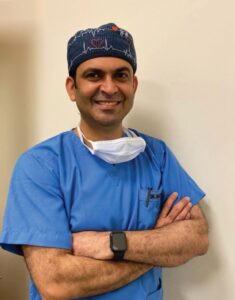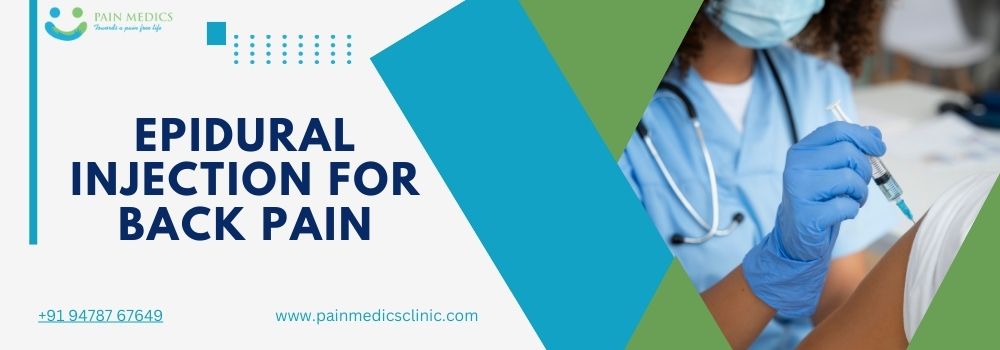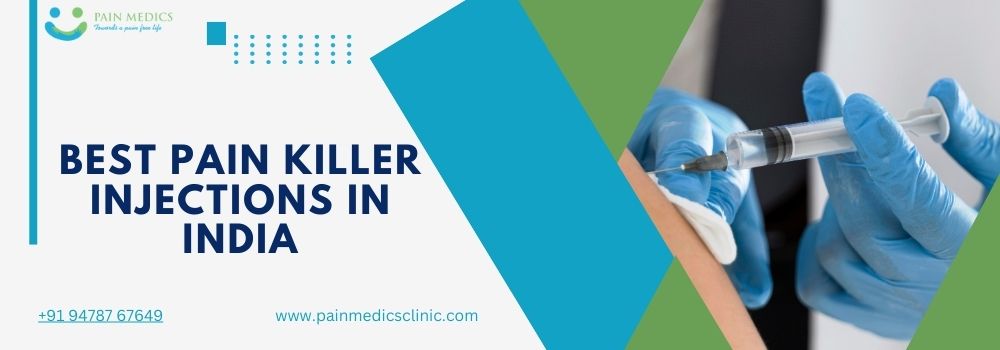Chronic low back pain is a common health issue that affects many people. Unlike back pain that goes away quickly with rest or simple treatment, chronic pain lasts for more than three months. It can make daily activities harder, disturb sleep, and lower the overall quality of life.
One specific cause of chronic low back pain is discogenic pain. This type of pain comes from damage or degeneration in the spinal discs, which are the soft cushions between the bones of the spine. As these discs get damaged or weakened over time, they become painful and inflamed, leading to back pain with discomfort.
In recent times, more people are choosing new treatments that aim to heal the main cause of pain instead of only managing it. One such treatment is Platelet-Rich Plasma (PRP) therapy. This method uses special healing cells from the patient’s own blood to help repair damaged discs in the spine. PRP and other similar treatments offer new hope to people with back pain caused by disc issues, especially when usual treatments have not worked.
What is Discogenic Pain?
Discogenic pain is a type of lower back pain that starts from a damaged disc in the spine. These discs work like soft cushions between the bones of the spine. Because of unaccustomed activity like sudden weight lifting or sports-related injuries, the discs may develop a tear inside. This leads to an inflammatory reaction inside the discs, leading to discogenic back pain.
It has to be differentiated from disc degeneration, which is a normal age-related process, leading to altered mechanics of the spine and causing pain mediated by facet compression.
Causes of Discogenic Pain
- Repeated bending, lifting, or twisting
- Past injury or trauma to the spine
- Obesity
Key Symptoms Of Discogenic Pain
People with discogenic pain often feel a dull, aching pain in the lower back. The pain may increase when sitting, bending forward, or lifting objects. In some cases, stiffness and reduced flexibility may also occur.
Discogenic pain is different from radicular pain, which usually spreads down the leg and is caused by nerve irritation, such as in sciatica. In contrast, discogenic pain usually stays in the lower back and does not radiate.
How It Is Diagnosed
Doctors use a combination of methods to diagnose discogenic pain, including:
Clinical Evaluation: Based on symptoms, physical examination, and patient history.
MRI (Magnetic Resonance Imaging): Helps identify disc damage or signs of degeneration.
Discography: A special test where a dye is injected into the disc to check if it causes pain, confirming it as the source.
Accurate diagnosis is important to plan the right treatment, especially when considering advanced options like regenerative therapy or PRP.
Understanding PRP Or Regenerative Techniques
Platelet-Rich Plasma (PRP) therapy is a natural treatment that uses a person’s own blood to help heal damaged tissues. It is part of a broader field called regenerative medicine, which focuses on repairing and restoring damaged parts of the body rather than just reducing symptoms.
What is PRP?
PRP stands for Platelet-Rich Plasma, which is a concentrated component of blood that contains a high number of platelets. These platelets are rich in growth factors – natural substances that help with tissue repair, reducing inflammation, and promoting healing.
How PRP is Prepared and Given
To prepare PRP, a small amount of blood is first taken from the patient. This blood is then placed in a machine called a centrifuge, which spins it at high speed to separate the platelets from other parts of the blood. The result is a concentrated solution of platelets, known as PRP.
Once prepared, the PRP is carefully injected into the affected disc or surrounding area using imaging guidance like fluoroscopy. This ensures accurate placement of the injection.
How PRP Works
PRP works by delivering growth factors directly to the injured area. These growth factors help trigger the body’s natural healing process. They reduce inflammation, support tissue repair, and may slow down or even reverse early degeneration in the spinal disc.
By encouraging the body to heal itself, PRP offers a non-surgical option for managing disc-related back pain and restoring function over time.
What Is The Procedure Of PRP Injection?
Here is the detailed procedure of the Regeneration Techniques:
- A small amount of blood is taken from the patient’s vein using a sterile syringe.
- The collected blood is placed in a centrifuge, a special machine that spins at high speed to separate the platelets from other blood components.
- After spinning, the platelet-rich portion (PRP) is collected in a sterile syringe for injection.
- The patient is positioned comfortably, usually lying face down, and the injection area is cleaned and disinfected.
- Local anesthesia may be given to reduce discomfort at the injection site.
- Under imaging guidance (such as fluoroscopy), a fine needle is carefully inserted into the affected spinal disc or target area.
- The prepared PRP solution is slowly injected into the disc space or surrounding tissue.
- The patient is observed for a short period to ensure there are no immediate reactions.
- Light rest is usually recommended for the next day or two, and normal activities can often be resumed gradually.
Also Read: Back Pain After C-Section: Causes and Effective Relief Tips
Other Regenerative Techniques
- Bone marrow aspirate concentrate (BMAC)
- Stem cell therapies
- Emerging biologics and hydrogel-based solutions
Get The Best PRP Treatment In Chandigarh At Pain Medics Clinic
The best treatment for back pain depends on the exact reason behind the pain. At our specialised pain clinic in Chandigarh, we carefully check the symptoms to understand the real cause. Treatment usually starts with regenerative medicines. In some cases, minimally invasive treatments like PRP injections into the discs can give better relief. Once the cause is clear, the right treatment is started.
Book your appointment today!







